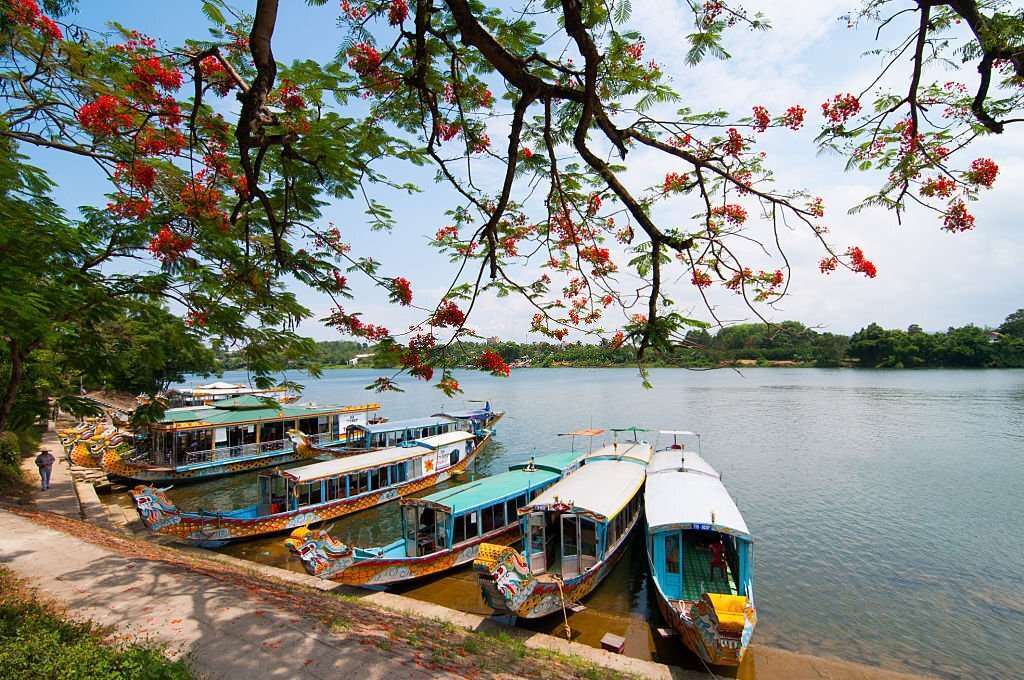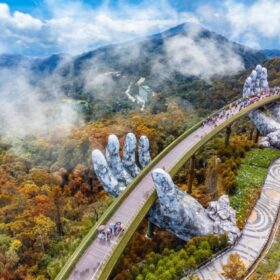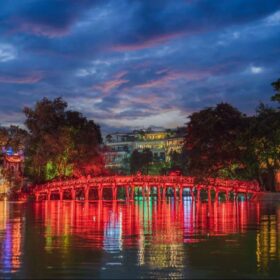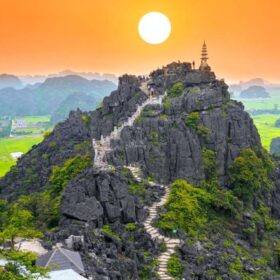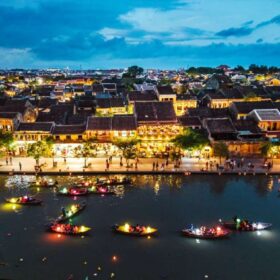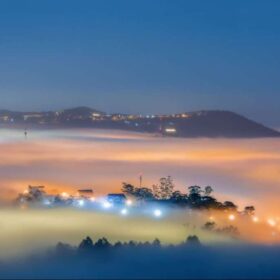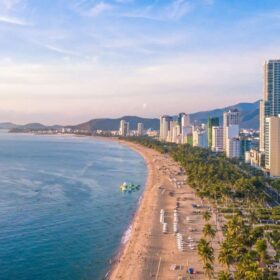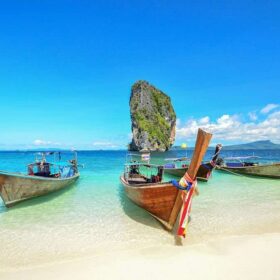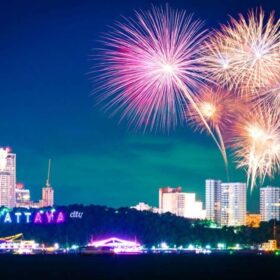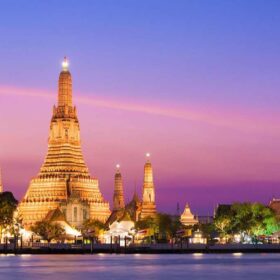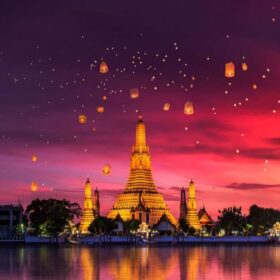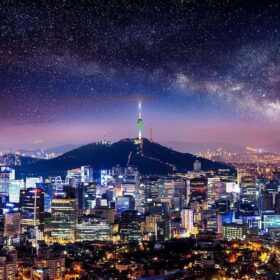Situated on the banks of the Perfume River, meandering through the town, Hue is a charming city brimming with a plethora of attractions and activities. Once the capital of Vietnam, it is steeped in history, renowned especially for the exquisite tombs of former emperors scattered throughout the area.
Despite its vibrant atmosphere, Hue bears the scars of one of the Vietnam War’s most harrowing battles, evidenced by the still-visible remnants of damaged monuments and temples. Today, Hue exudes a laid-back ambiance, offering delectable cuisine and the warm hospitality of its friendly locals who will make you feel at home from the moment you arrive.
Imperial Citadel
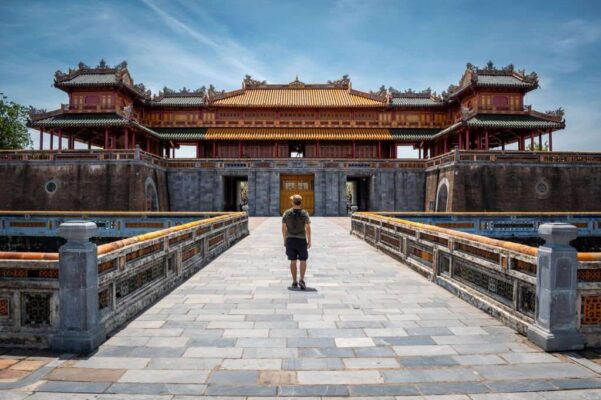
Also known as the Imperial City, this magnificent complex served as the residence for Vietnam’s emperors, safeguarded by its thick stone walls and surrounding moat. Its construction commenced in 1804, and despite enduring damage over the years, the buildings continue to present an awe-inspiring spectacle. Within the fortified walls lies a vast array of temples, courtyards, gardens, and more, making it a mesmerizing place for exploration.
Among the numerous highlights is the stunning Meridian Gate, a marvel of design that manages to exude both elegance and intimidation simultaneously. The To Mieu Temple Complex offers another captivating area to discover, as does the Purple Forbidden City.
Although much of the Imperial Citadel suffered damage during the Vietnam War and subsequent neglect under communist rule, this enchanting attraction is an absolute must-visit when in Hue.
Thai Hoa Palace
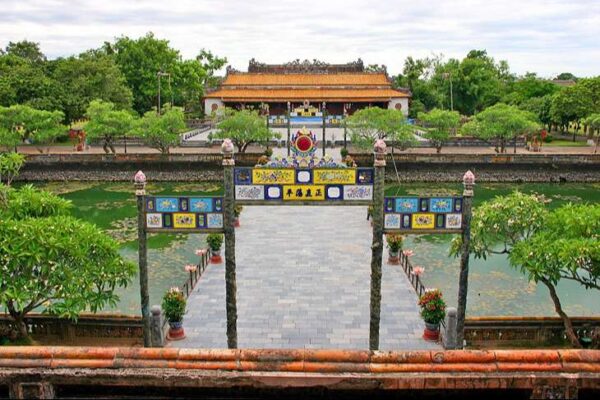
The Thai Hoa Palace, which stands at the core of the Hue Citadel and is reached shortly after passing through the Ngo Mon Gate. This is arguably the most significant architectural achievement of the Nguyen dynasty, the last reigning dynasty in Vietnam. The palace’s design is intended to symbolize a profound yin/yang equilibrium, where the physical and the spiritual realms exist in perfect harmony.
While the palace endured the bombings of the Vietnam War, extensive interior restoration was necessary to repair the damage inflicted during the Battle of Hue.
Upon arrival, visitors are greeted by an impressive scene, featuring a lotus lake and a lengthy courtyard walkway leading to the palace. The palace’s main chamber is a spacious hall with a timber roof supported by 80 timber columns. Originally designated for royal ceremonies and events, it also served as the coronation site for Emperor Gia Long and as the location for receiving visitors, both during formal diplomatic encounters and, on rare occasions, when opened to the public. In the center of the hall, a covered golden throne is prominently displayed.
Khai Dinh Tomb
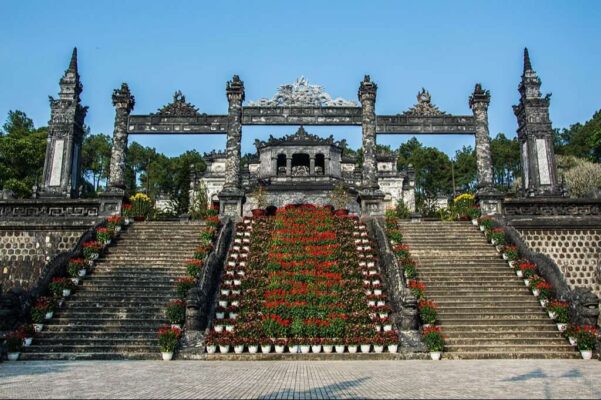
The Khai Dinh Tomb, the final imperial tomb constructed in Vietnam, underwent an eleven-year construction period and serves as the final resting place for the emperor it was named after. It is a captivating destination characterized by a unique blend of Western and Eastern architectural styles.
Upon ascending a lengthy staircase, visitors are welcomed by grand stone pillars, archways, and a courtyard adorned with statues of bodyguards. Inside the tomb, intricate dragon motifs adorn the ceilings, and the opulent decorations and designs, featuring a plethora of porcelain, are truly mesmerizing. The ascent up the hillside is well-rewarded by the impressive and splendid Khai Dinh Tomb.
Thien Mu Pagoda
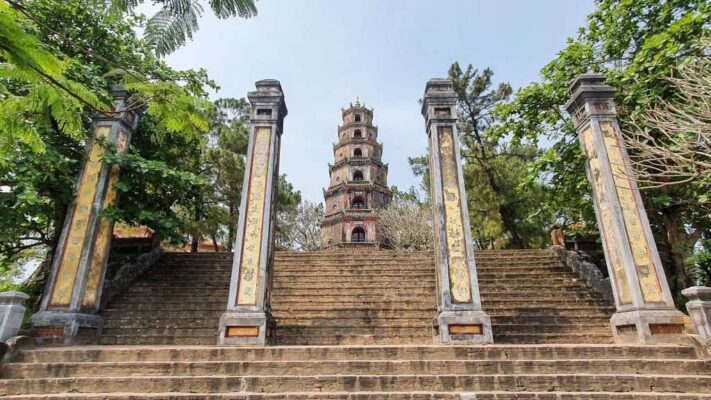
Perched above the meandering Perfume River that winds its way through the city, the Thien Mu Pagoda holds the unofficial title of Hue’s symbol and enjoys renown throughout Vietnam. Its initial construction dates as far back as 1601, with the present-day pagoda dating to 1844.
The pagoda’s towering seven stories, which rise above the surrounding trees, constitute one of Hue’s most prominent highlights. The lush grounds surrounding it offer a picturesque opportunity for leisurely exploration.
Additionally, the pagoda holds political significance as it was the site where Buddhist protesters, demonstrating against the repression of the Catholic government, tragically lost their lives in 1963. Today, it stands as a peaceful and serene destination, becoming one of the primary attractions in Hue.
Alba Thanh Tan Hot Springs
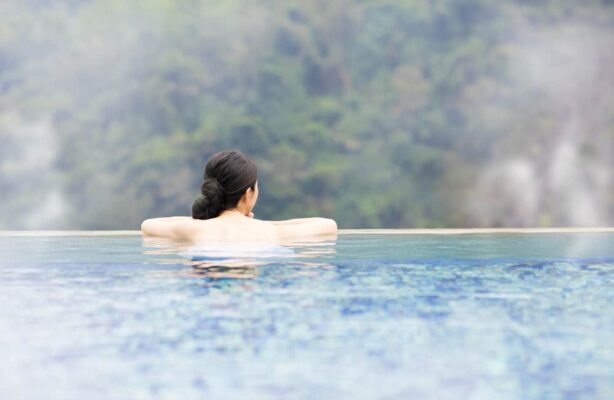
Located approximately 30 kilometers outside of Hue, these popular hot springs offer an excellent opportunity for relaxation and rejuvenation. Although technically part of a resort that includes accommodations and various other attractions, it’s entirely feasible to visit solely for a day of hot spring indulgence. What’s more, a complimentary resort shuttle bus operates between the city and the hot springs, simplifying transportation.
The springs originate at a natural temperature of 68 degrees Celsius, but they are carefully regulated through a network of streams and natural pools to reach the ideal temperature. This ensures that you can immerse yourself in the therapeutic and mental benefits of the mineral-rich waters while unwinding beneath the rustling trees in the gentle breeze.
For those seeking an extended stay, there’s an exhilarating 560-meter-long zipline that takes you through the lush rainforest and an adventurous rope course to test your balance. Stay for a peaceful meal overlooking the ponds as the day comes to a close.
Minh Mang Tomb
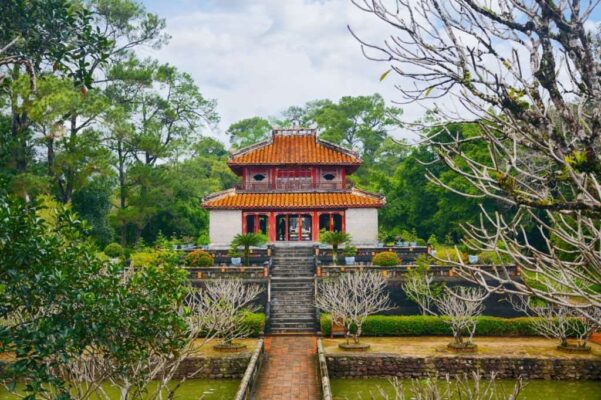
Constructed to serve as the final resting place for the second emperor of the Nguyen Dynasty, this magnificent mausoleum enjoys tremendous popularity among both tourists and locals. As visitors stroll along a pathway that spans across a serene pond, they are greeted by the imposing tomb perched atop a staircase, leaving a lasting impression.
The tomb’s surroundings feature scattered trees, with the vivid red of the roof creating a delightful contrast against the lush green foliage and the azure sky above. Given Minh Mang’s staunch resistance to French involvement in Vietnam, the mausoleum serves as a fitting tribute to his enduring legacy.
Royal Theater
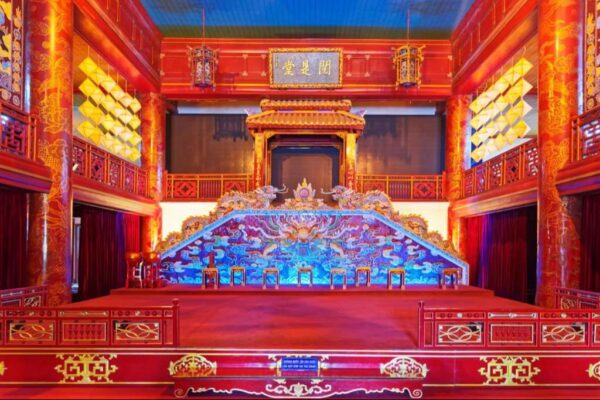
Constructed in 1826, the resplendent Duyet Thi Duong Royal Theater, adorned in red and gold, was originally commissioned exclusively for the royal family’s enjoyment of traditional art performances within an opulent and regal ambiance. Its grandeur was reserved for the emperor and his closest confidants, with occasional banquets and performances held for esteemed guests visiting the royal court.
Following extensive renovations, the theater finally welcomed the general public in 2004.
As Vietnam’s oldest continually operational theater, it provides an ideal venue to witness performances of Nha Nhac-Royal Music. During periods without shows, the theater opens its doors to visitors interested in exploring exhibits featuring theater masks and traditional musical instruments. Guests can even take a seat in the plush red chairs, offering an up-close view of the stage.
Dong Khanh Tomb
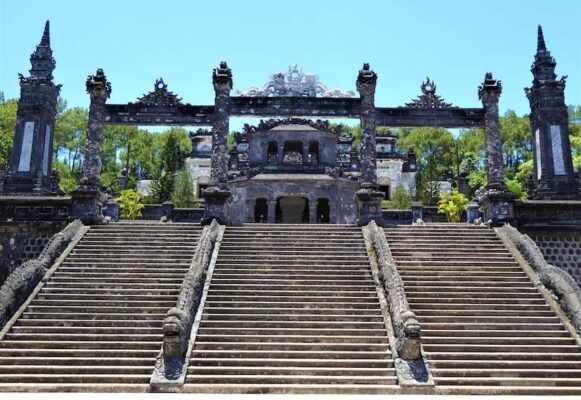
Situated a mere five kilometers from the city center, the construction of the Dong Khanh Tomb spanned over thirty-five years. The architectural beauty of this site is a testament to the contributions made by different emperors and architects throughout its history.
Tragically, Dong Khanh passed away at the tender age of twenty-five, leaving no opportunity to design his own tomb. Consequently, the tomb we encounter today boasts a pronounced European influence in its style. Remarkable stone statues embellish the tomb’s surroundings, featuring depictions of elephants, horses, and warriors. It stands as a solemn yet awe-inspiring place to visit.
Thanh Toan Bridge
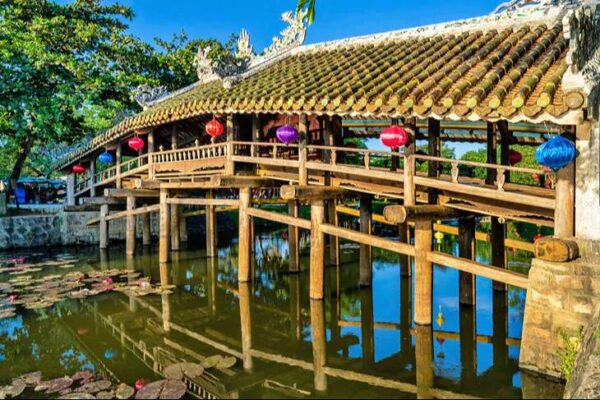
Also known as the Japanese Bridge, Thanh Toan is a charming and picturesque bridge, although there isn’t much else in its immediate vicinity that would captivate visitors. Tran Thi Dao commissioned its construction to facilitate travel and communication between a secluded village and the broader world, which had previously been separated by the canal now bridged by this structure.
Upon Tran Thi Dao’s childless passing, the emperor instructed villagers to erect an altar at the bridge and offer prayers to her as they passed by. In Vietnam, ancestor worship holds significant importance, and the villagers continue to pay homage to her to this day. With its distinctive, slightly weathered appearance, the Japanese Bridge is a delightful spot to visit, although it won’t occupy much of your time to explore.
Bach Ma National Park
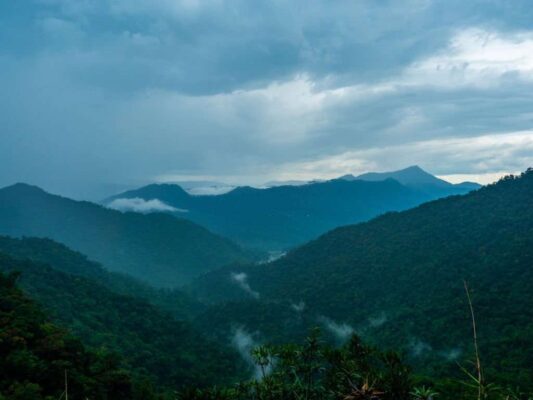
Situated within the Annamite Mountains, Bach Ma National Park occupies a lush and verdant expanse in one of the wettest regions of the country. The steep mountainsides are adorned with vibrant forests and stunning waterfalls, while weathered French villas are interspersed throughout the area.
Preserved in its natural state, this biodiverse region harbors a wide array of wildlife, making it an excellent destination for hiking. Exploring the jungle on foot provides an incredible experience, and as a result, Bach Ma is a destination you should definitely consider when you are in Hue.
Tu Duc Tomb
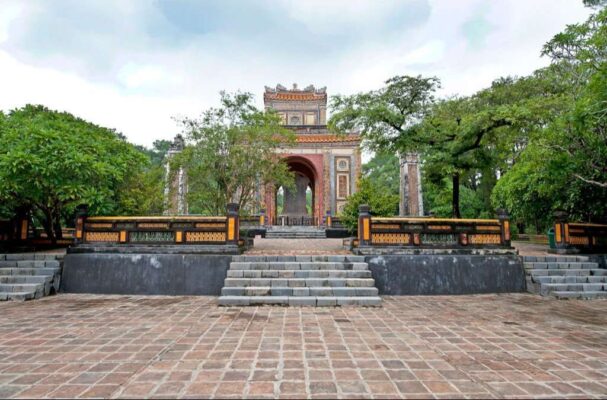
Perched atop Van Nien Hill, Tu Duc’s tomb is enveloped by a forested landscape, featuring a charming pavilion and a pond adorned with water lilies for visitors to delight in. Constructed between 1864 and 1867, the tomb was conceived by the emperor himself. Its exorbitant cost and the utilization of extensive forced labor led to a coup against him.
While the complex boasts aesthetic beauty, the tomb itself is relatively unremarkable, and Tu Duc was never actually interred there. However, the temples, statues, and outer courtyard offer a delightful space for exploration, making a visit to Tu Duc’s tomb worthwhile.
Dong Ba Market
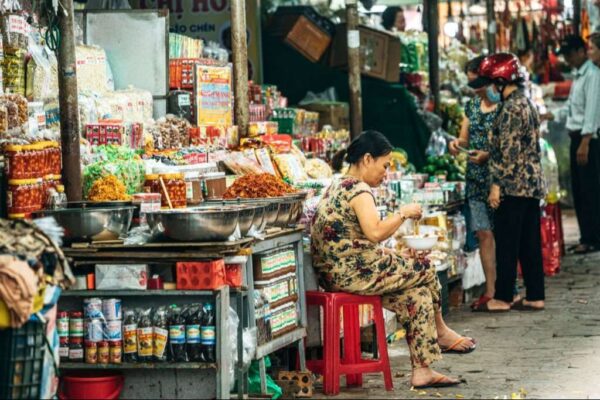
Outdoor markets are an integral part of Vietnamese culture, and Dong Ba Market in Hue is a prime example. This city’s oldest and largest market sprawls over 16,000 square meters of bustling space, where stalls selling fresh vegetables coexist with handicrafts and souvenirs.
The market opens in the early hours of the morning (around 3 a.m.) to serve local shoppers looking for fresh seafood and other groceries. However, you can visit during the day or afternoon to shop for keepsakes to bring home.
For those seeking clothing or wearable souvenirs, the market dedicates an entire second floor to such items, offering various textiles and the iconic non la bai tho (the traditional conical leaf hat worn in Vietnam).
Dong Ba Market also boasts a diverse range of Vietnamese souvenirs, including lacquerware, bamboo products, and guoc moc, which are simple clogs crafted from bamboo or wood.
Accommodation: Where to Stay in Hue: Best Areas & Hotels
FAQs
Q: When is the best time to visit Hue, Vietnam?
A: The best time to visit Hue is during the spring (from February to April) and autumn (from September to December) when the weather is pleasant, and rainfall is minimal.
Q: Is it necessary to hire a guide to explore the Imperial City?
A: While hiring a guide can enhance your experience by providing historical context, exploring the Imperial City on your own is also possible, thanks to informative signage.
Q: What should I buy as souvenirs in Hue?
A: Hue is known for its intricate handicrafts, such as conical hats and colorful silk products. These make for excellent souvenirs.
Q: Are there vegetarian food options in Hue?
A: Yes, Hue offers a variety of vegetarian dishes, including vegetarian versions of its famous Bun Bo Hue.
Q: How can I get to Hue from Hanoi or Ho Chi Minh City?
A: You can reach Hue by train, bus, or domestic flight from major cities like Hanoi and Ho Chi Minh City. Domestic flights are the quickest option, while trains offer a scenic journey through Vietnam’s countryside.

